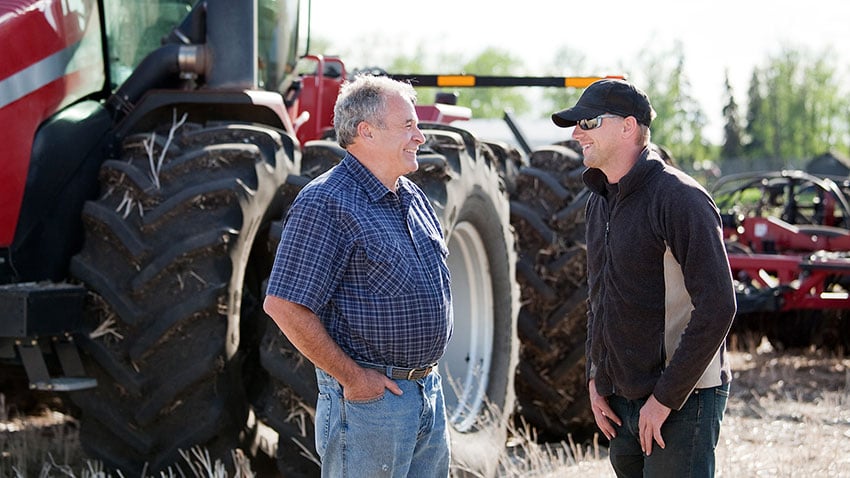
We visit with local farm customers on a daily basis. During harvest season, we’ll drop by with sandwiches for them and their crews. It’s a way to stay in touch, chat for five or ten minutes and catch up with what’s new on their minds.
Right now, as you probably know, a lot of farmers are feeling the stress. Their breakeven point is higher than the price of grain. Unless market prices come up, they’ll be left trying to figure out how to reduce their production costs even further. This often involves negotiating with their landlord for lower rent.
You may know about this first-hand and are wondering if you can extend your negotiations into January. We’re seeing a lot of farmers and landlords taking a “wait and see” approach.
In Nebraska, with high property tax rates, negotiating for a reduction in rent can be tough. Waiting on market prices to inch upward just delays the hard decisions.
Still, you can always count on a good landlord to work with a good, long-time tenant. Where there’s history, there’s also perspective on costs, yields and market prices. There’s a way to talk about things and a way to compromise.
If you’re in a position where you need to negotiate, then it’s vital to know your breakeven point. More than that, it’s vital to be able to show your analysis to your landlord. A breakeven calculator is a good starting point. A breakeven analysis can help you demonstrate where you’re landing, with your specific costs and yields – and current market prices.
If you’re negotiating with a farm management company, you’ll want to have your own analysis to compare to theirs. They’ll be looking at the UNL agricultural report, historical yields, average rental fees across the area – and property taxes.
Your analysis can be even more vital negotiating directly with a landlord who has been “off the farm” for a few generations or might be out of state. You’ll need your numbers to help them understand.
Whatever your situation, knowing your numbers can help you negotiate a good rental price for land that you want to hang onto.
To keep rental costs down, this time around we might see more three-year leases instead of the usual one-year lease. Admittedly, signing a three-year lease comes with its own set of risks. Farming doesn’t always lend itself to “long-term” thinking. Being nimble and adjusting to the market year-to-year often feels like a safer approach.
However you choose to proceed, when it comes to rental prices there’s almost always negotiation. Everyone will be trying to find a workable number for their operation. With a tight market and three straight years of low prices, renters and landlords will need to work together to keep farms working and the farm family a viable way of life.

Kevin Parde is the Chief Risk Officer of Heartland Bank and is also on the Bank Board of Directors. He graduated from University of Nebraska-Lincoln with a degree in Ag Economics and has over 30 years of experience in banking. In addition, Kevin has his Real Estate Brokers License and his Insurance licenses in Life, Health, Property and Casualty. Outside of work Kevin enjoys spending time with his family.
Due to recently increased security requirements, we at Heartland Bank are no longer able to support version 10 or older of Internet Explorer. We are sorry for this inconvenience, and encourage you to upgrade to more secure options such as Internet Explorer 11, Google Chrome, or Mozilla Firefox.